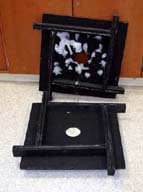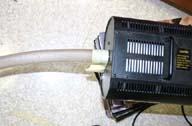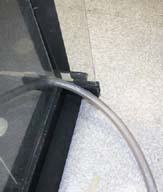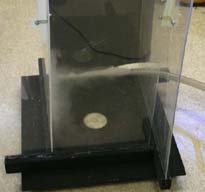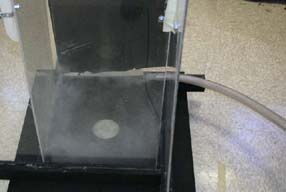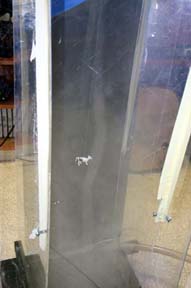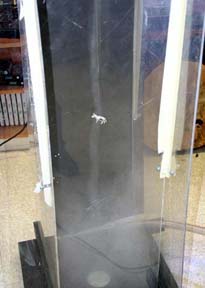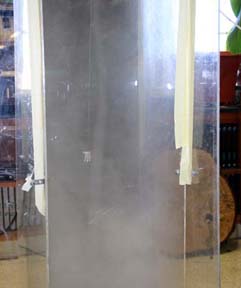Making a Tornado Box
| The Key to making a tornado box it the base. It has to be a box with overlapping sides. This forces air to spin on one direction (you should choose counterclockwise in the northern hemisphere). Cut a hole in the top to allow air to be sucked out with a fan. The 2x3 studs used for the wall bases and tops have grooves cut in them for the plexiglass walls to slip into. The box is built on casters so that the tornado can be wheeled around the room. It is also designed to be easily assembled and disassembled. When disassembled, it takes up about as much room as a card table propped behind my file cabinet. | |
| The walls are attached with "L" brackets and they are set so that there is about 1/2 -3/4 inches between the two panels. The brackets work just fine by tightening by hand without tools. I usually have a student assist me by holding a side or two up until the box is established. These walls are made of plexiglass but you can also use plywood for three of the walls and something rigid and clear for the forth. | |
| Most on-line sources say to use dry ice or a hotplate with boiling water to make the fog (or to "mark the air" as I like to say). I use fog to make fog. It is pumped into the box with a hose just large enough to fit over the nozzle. Too small of a hose and it will kill the fog. | |
| The fog is pumped into the box near the bottom. | |
| A small fan (not shown) is laid on top of the box blowing the air upward (sucking the air out of the box). The fan I use has three speeds and I experimented with the speeds to see which was the best. It probably depends on all the variables of the box (size, height, width of the spaces, size of the hole...). Resist the temptation to fill the box completely with fog. I get the best tornadoes with a small puff of fog. | |
| Sometimes it takes a few minutes to establish the airflow in the box. Once it gets going the tornado is always there (as demonstrated by the erratic movement of the cow-see next picture), you just cant see it until the fog marks it. | |
| The tornado becomes hypnotic and takes on a life of its own. | |
| The hole at the bottom is used for taking pictures up into the tornado but it is usually sealed with masking tape. | |
| Note the tape in the corners of the walls closing the top half of the ventilation slots. After experimentation, I've found that the best tornadoes (at least in this box) comes when only the bottom third to half of the slots are opened. | |
 |
|
See the box in action here:
|
|
